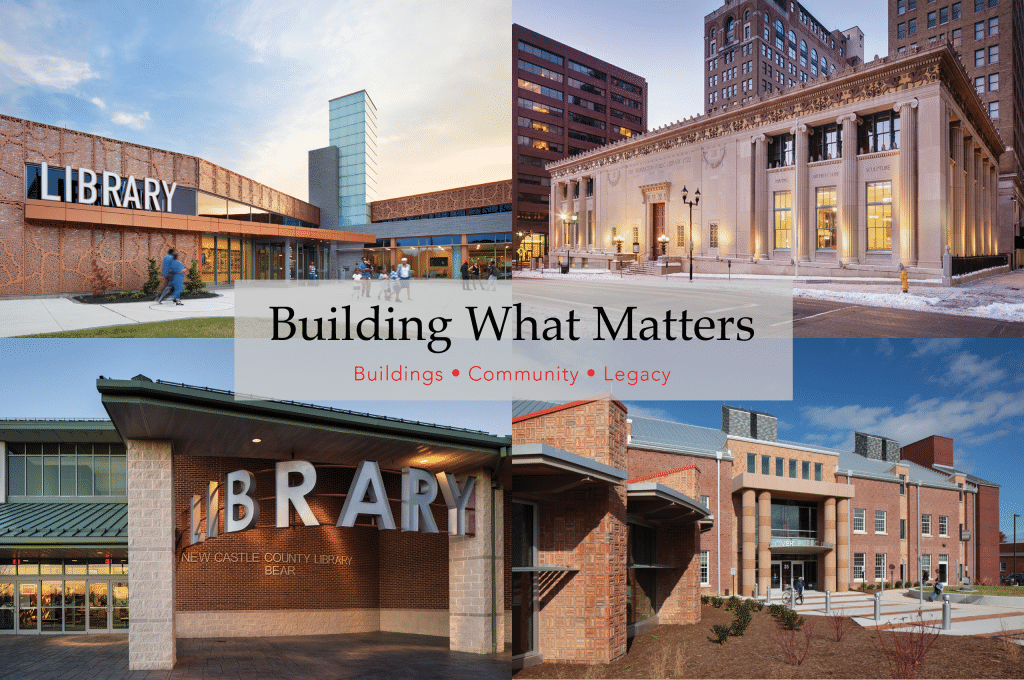By: EDiS Vice President & Operations Manager Christian McCone, PE, PMP, LEED AP
As of 2021, there are over 17,000 public libraries in the United States, more than there are McDonald’s fast-food restaurants. The public library requires nothing of its visitors: no purchases, no membership fees, no dress code, no time limit. You don’t need money or a library card to access a multitude of on-site resources that includes books, e-books and magazines, job-hunting assistance, computer stations, free Wi-Fi, and much more. In essence, it’s the perfect gathering spot for quite literally anyone in the surrounding community. It is also a frequently overlooked staple in the community support ecosystem. One could refer to a library as a “community center” more than anything else.
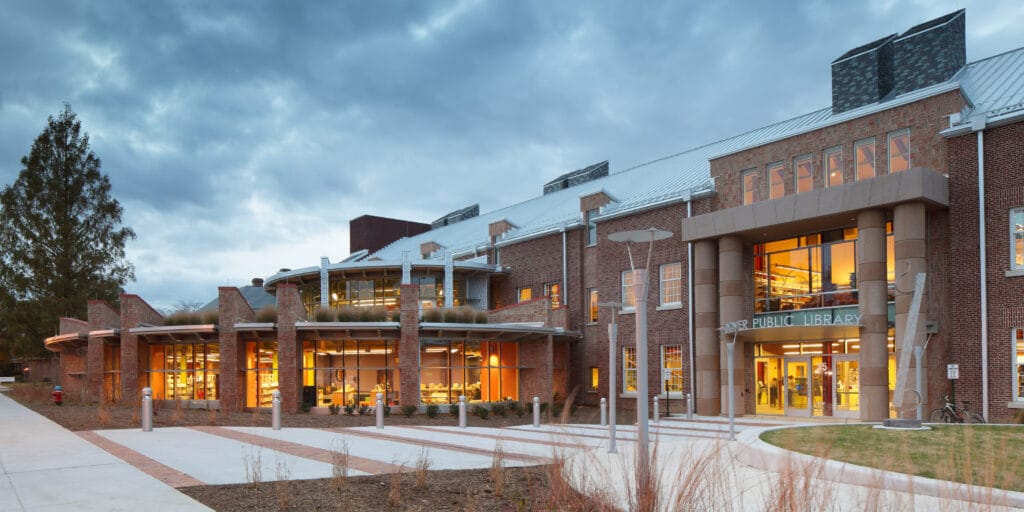
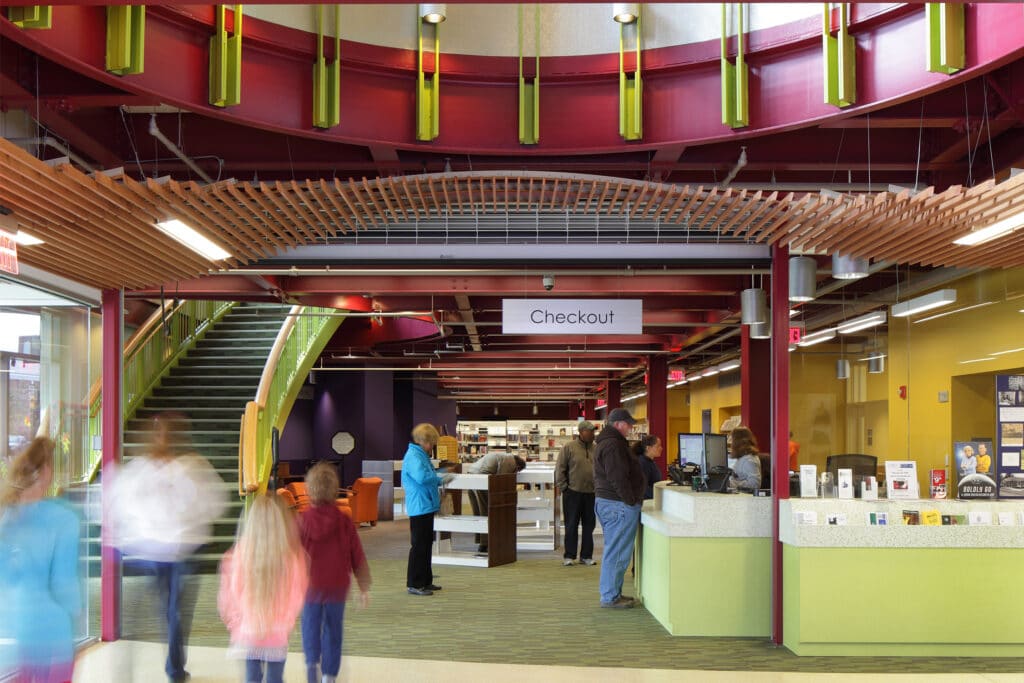
Over the course of my career at EDiS I’ve had the pleasure of being involved with the planning and construction of some of our most impactful library projects: The Route 9 Library, Bear Library, Dover Library, and currently the Kennett Square Library & Resource Center. Soon to follow Kennett will be the brand new Harrington Public Library. These projects are seeing a rapid evolution both in frequency and scale as libraries seek to accommodate not only an ever-growing population, but a need for programming and technology to help and educate the communities they serve.
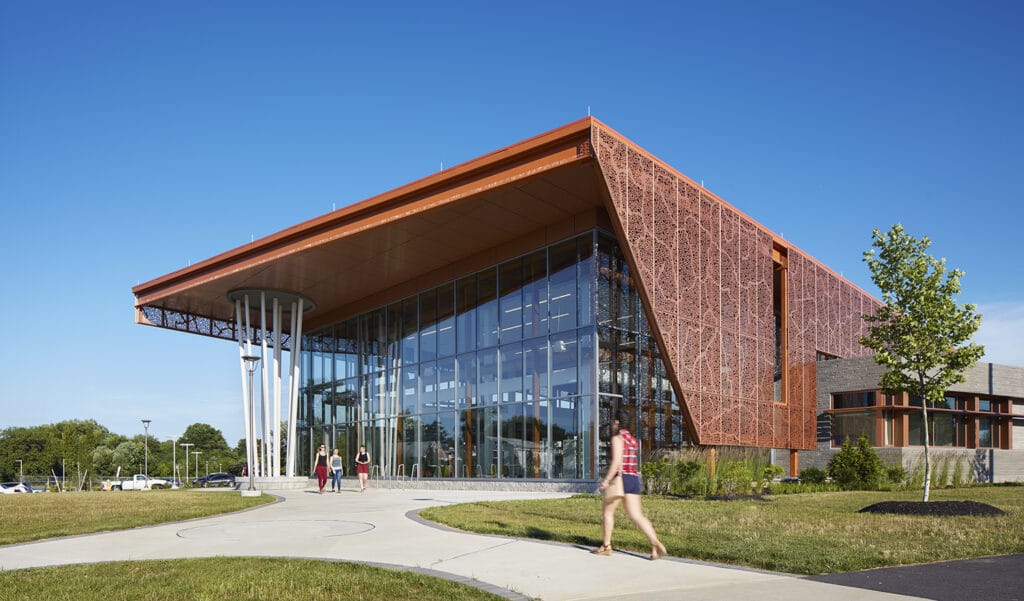
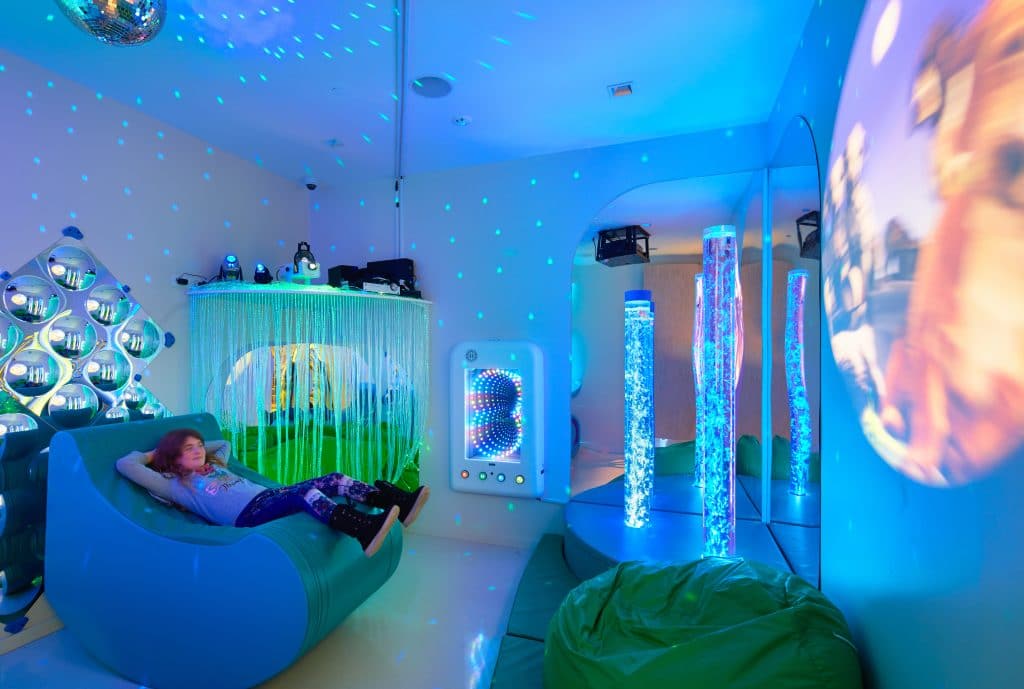
Libraries have always been catalysts to foster community enthusiasm for reading and literacy. The successful library of today also acts as a “community center” extension – exploring new ways to build and strengthen community ties, and contribute to local development. Modern libraries supplement local schools, sometimes providing resources and programs that ease the often stretched budgets of our school districts. Simply put, each library serves the needs of its individual community.
Programs and Features now Include:
- E-books, e-mags, and audiobooks
- Language tools and resources
- Maker spaces, innovation workshops
- College prep, job prep, and tutoring
- Cultural events, programs, and classes
- Separate spaces for the physically and mentally impaired
- Clubs and afterschool activities
- Music, tv, and movie streaming
- Passport issuance office
- Black box gathering space
- Grab & go meals
Placemaking impacts community and is the key to keeping libraries functional and relevant. Why? Because placemaking uses a people centered approach to designing and revamping public spaces into attractive gathering places for fun, communication, connection, cultural enrichment, and of course learning. It is about observing people, their behaviors, their interactions with the space, and how often they return to use the space again.
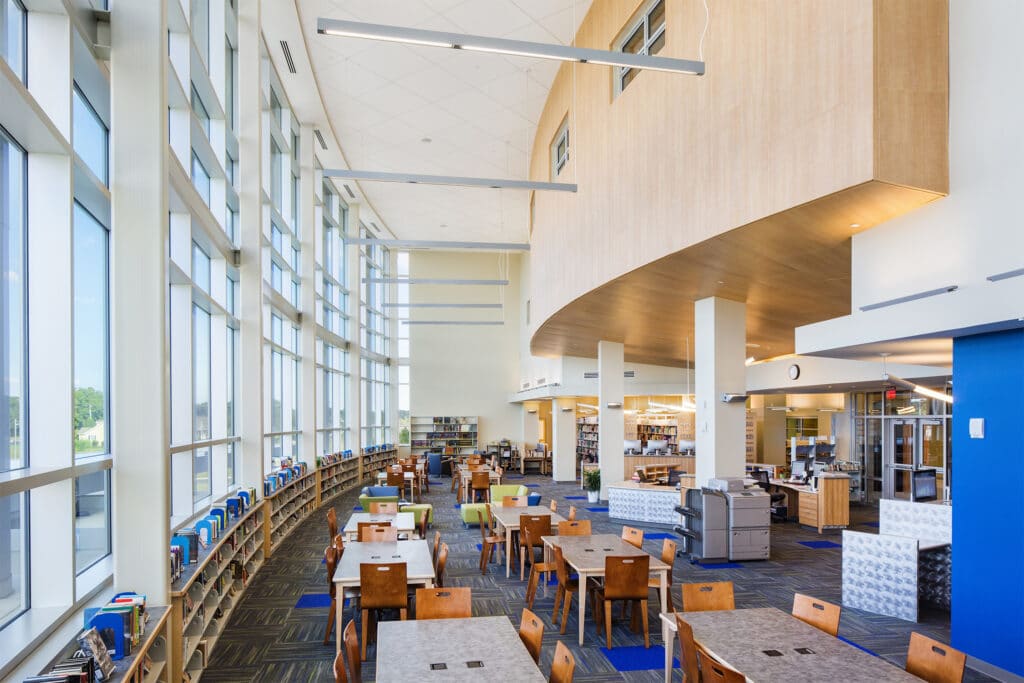
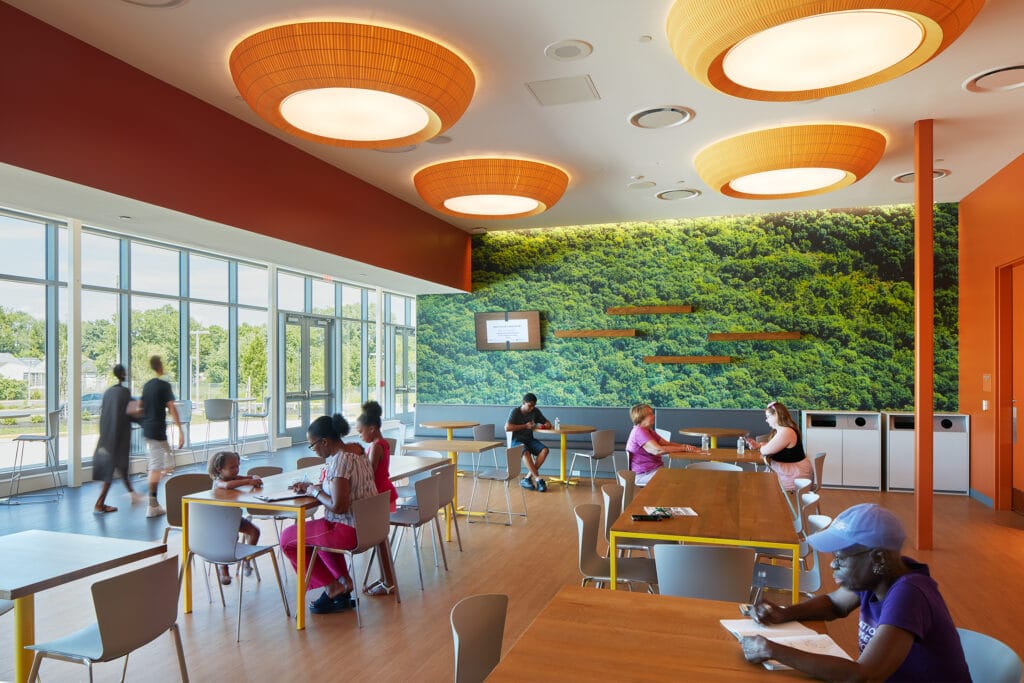
As we move through the COVID-influenced world, use of outdoor space is also a more tangible extension of place. As I said earlier, once that information is established, each library can better serve the needs of its individual community. At EDiS Company, we’re fortunate to have been able to observe a multitude of different libraries over many years, giving us direct insight into the intricacies of the modern library.
Challenges for the Public Library:
- Emerging technologies develop at a rapid pace
- Community dollars are hard to come by and other means of investment capital is needed
- Library staff and volunteers have to take on new roles as informers and educators as programming has expanded long past book rentals
- Older libraries are built to a smaller scale
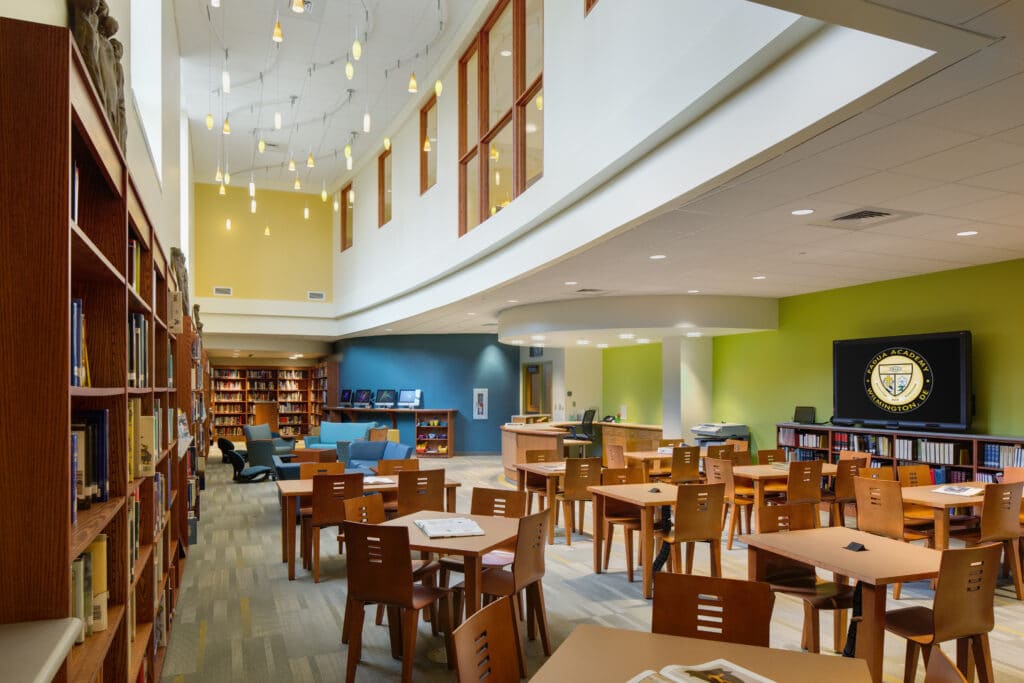
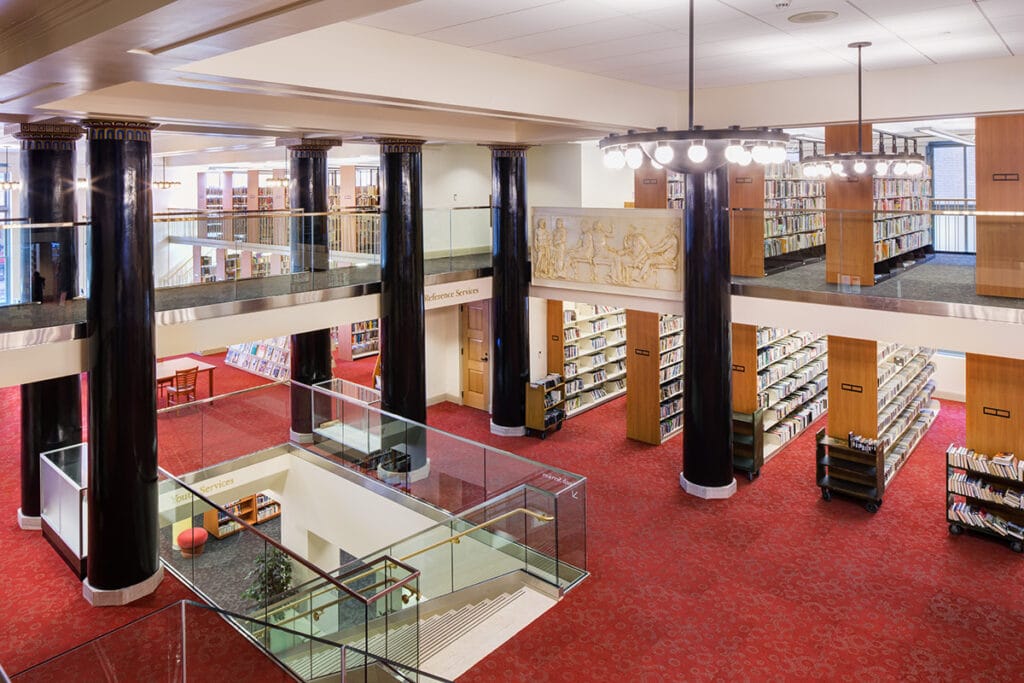
In any project where funding is complex – whether due to mixed funding sources, unknown fundraising capabilities, or an unusually tight budget, we recommend bringing in a Construction Manager like EDiS as early as possible. Bringing your design team and construction team together streamlines the entire process of building or renovating libraries.
Ultimately, the time of the quiet library is over. Public libraries over time have been changing from places of collection to places of connections and now also towards creative collaboration. At EDiS Company, we can’t wait to make that a reality for our future clients.




